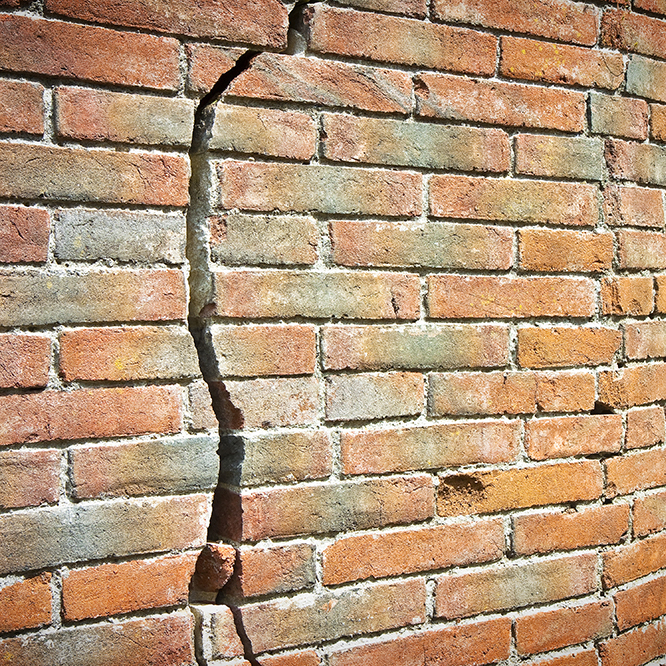With British summers getting hotter and dryer every year, more properties are suffering from subsidence issues.
Following the record temperature summer of 2018, insurers reported that subsidence claims rose by 25% and that they were bracing themselves for an additional influx as the warm weather continued.
Hot weather can cause the ground beneath a property to lose moisture and contract which causes foundations to sink. This can also be caused by tree roots drawing moisture from the soil. Whatever the cause, subsidence is a serious problem and can cause severe damage to property.
Not all homes are at the same risk of subsidence. Clay soil can shrink, crack and shift during hot weather making this type of ground unstable. Houses in areas that are prone to drought also have an increased risk of subsidence. The age of the property, local mining activity and leaking drains or water mains can also affect the stability of a property.
What are the Signs of Subsidence
Subsidence can also cause windows and doors to stick as the building’s structure becomes distorted.
The first sign is usually from cracks appearing in plaster inside a home or in external walls. These cracks are often different from the usual cracks that appear. They usually develop very suddenly and often after long periods of dry weather.
Other tell-tale signs include:
- Gaps thicker than 3mm (roughly the width of a 10p coin).
- Diagonal cracks that are wider at the top.
- Cracks that are visible both internally and externally.
- Cracks close to windows and doors
- Cracks where an extension joins the house.
- Wallpaper crinkling where the ceiling meets the wall.
However, it’s important to remember that not all cracks that appear are linked to subsidence. Buildings naturally shrink and expand as the weather conditions change and cracks can appear as new homes settle and plasterwork dries out.

Can Subsidence be Repaired?
Depending on the severity of the issue, most cases of subsidence can be cured. There are various methods and products available to lift your property back into position and reinforce the ground below.
Resin injection can repair even the most severe cases of subsidence quickly and effectively.
The first stage of any subsidence treatment is to assess the situation and identify the cause of the movement and the structural condition of the property. If resin injection is identified as a viable option, holes are drilled into precise locations into which resin is injected to lift the property back into position. This procedure is performed under highly controlled conditions using levelling monitoring technology and highly-trained operatives.
The resin injection method of subsidence repair also strengthens the ground underneath the property, thus reducing the risk of future subsidence.
Resin injection subsidence repair is non-disruptive, fast, reliable, flexible and controlled. However, if this type of repair isn’t suitable, a qualified structural engineer will be able to advise the best option for repair.
About Shire
Shire aims to have an active involvement in projects, making recommendations where we see more effective solutions. We have gained a reputation for being ‘Thinking Engineers’ which has led to a varied workload in the Civil, Structural, Highways, Aerospace, Education and Rail sectors.
Over time, we have expanded our services to include geotechnical investigations, telecommunications design services, structural repair services (including piling, jacking, root barriers), product innovations and foundation systems to name a few. We work on projects large and small to provide effective and affordable solutions.
If you have any questions or would like to speak with one of our experts, please feel free to get in touch on +44 (0)1527 579933 or send an email to engineers@shire-uk.com.


